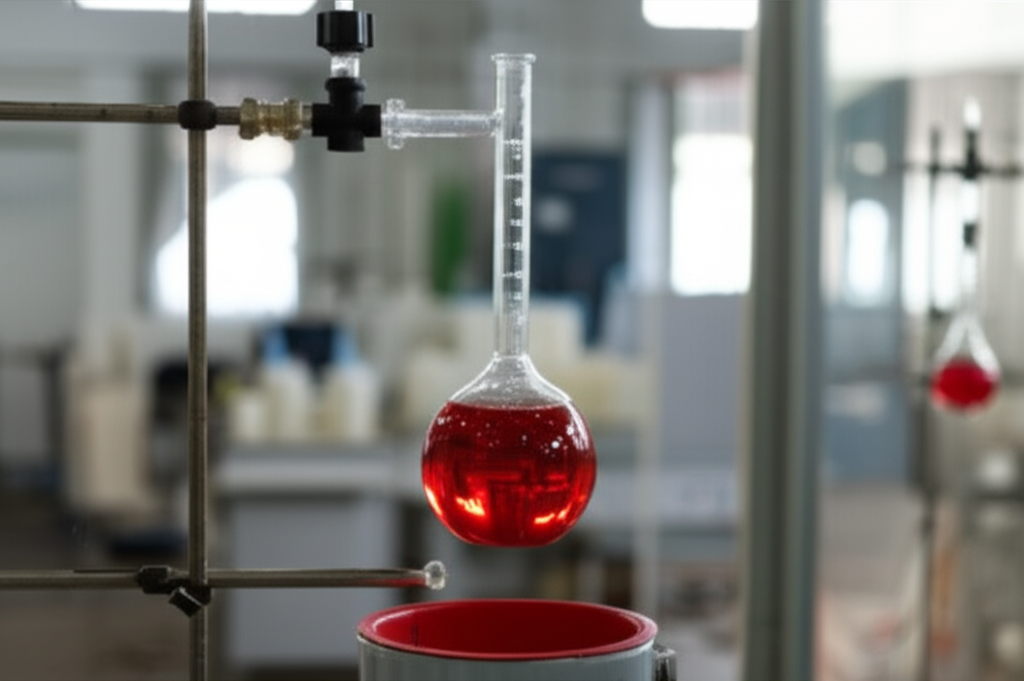Para-aminophenol (PAP), an essential intermediate in fine chemicals, plays a critical role in industries such as pharmaceuticals, dyes, and rubber due to its unique amphoteric properties and reactivity. As a versatile compound, it facilitates a range of reactions, including aromatic substitutions, making it indispensable for manufacturing medications like analgesics and dyes. Historically, PAP synthesis dates back to 1874, evolving through methods such as nitrobenzene catalytic hydrogenation, which offered simplicity, low cost, and minimal environmental impact, but faced inefficiencies in catalyst design that hindered large-scale adoption.
Conventional approaches often utilize activated carbon-supported platinum catalysts, which suffer from structural irregularities, limited mechanical strength, and poor recoverability, reducing catalytic efficiency. These shortcomings—attributed to the two-dimensional nature of carbon carriers—result in fewer active sites, higher platinum consumption, and potential thermal deactivation through sintering, ultimately capping yields at suboptimal levels and escalating costs in high-demand applications.
The newly developed synthesis process overcomes these challenges by integrating an innovative modified catalyst based on hollow mesoporous carbon spheres loaded with platinum particles. This catalyst framework enhances thermal stability and provides abundant three-dimensional binding sites, ensuring uniform Pt dispersion and preventing overheating issues. By utilizing nitrobenzene as an inexpensive starting material and streamlining the reaction system, this method reduces operational complexity while promoting environmental friendliness through recyclability and higher purity outputs.
The key catalyst preparation involves rigorous steps: initial synthesis of a precursor solution combining ethanol, water, ammonia, triethoxysilane, resorcinol, and formaldehyde under agitation; hydrothermal treatment to form structured intermediates; carbonization under inert atmospheres; and etching with hydrofluoric acid to create hollow mesoporous carbon spheres. Platinum is then deposited via immersion in chloroplatinic acid, followed by drying and activation under reducing gas streams to achieve the final high-performance catalyst.
For PAP synthesis, the reaction begins with mixing nitrobenzene, hexadecyltrimethylammonium bromide, dilute sulfuric acid, methanol, and the prepared catalyst in a sealed reactor. Air is displaced using nitrogen and hydrogen gases, maintaining hydrogen pressure at 0.3 megapascals and a water bath temperature of 80 degrees Celsius for optimal reaction times of 30 to 60 minutes. Post-reaction, the crude mixture undergoes filtration to reclaim catalysts, followed by pH adjustment with ammonia and multiple toluene extractions. Subsequently, crystallization is induced via ice-water cooling and washing with dilute solutions, yielding pure PAP after controlled drying cycles.
This process highlights substantial advantages, including a 90.2% to 92.3% yield efficiency, as verified in comparative experiments, drastically outperforming conventional methods which recorded only 61% yields. Key innovations such as the hollow structure improve mechanical resilience for easy recovery and reuse, while expanding active sites cuts platinum usage and sustains catalytic activity at elevated temperatures, addressing previous inefficiencies in commercial settings.
Looking forward, this breakthrough methodology not only elevates the economic feasibility and sustainability of PAP manufacture but also aligns with industry demands for scalable, pollution-minimizing processes. Potential expansions into other fine chemical derivatives could catalyze further innovations across sectors, reinforcing its suitability for global pharmaceutical supply chains.

Manufacturing Facilities






Professional Export Experience
to Global Customers

1. 20 years of R&D, manufacturing and sales experience, serving customers in 60 countries and regions around the world;
2. Own R&D laboratory, pilot platform and large-scale production workshop, which can meet the audit requirements of global customers;
3. We can satisfy customers' perfect transition from small scale lab requirements (gram level) to commercialization requirements (hundred tons level).
A: We don't have Minimum Order Quantity, exact quantity should be provided before quotation for us to calculate the exact cost.
A: We don't provide free samples due to lots of request and expensive international courier's cost, we can deduct the sample charge after commercial order placed.
A: Our payment terms: Small or sample order: T/T IN ADVANCE. Commercial order: First order should be by T/T IN ADVANCE or L/C at sight, and following orders T/T 30~90days is acceptable subject to approval of credit application.